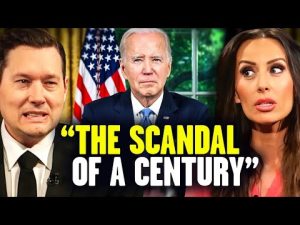In a spirited discussion that recently aired on a conservative news channel, two individuals tackled the age-old topic of the separation of church and state. With a lively exchange that could have taken place over a cup of coffee, the conversation revolved around the impact of moral codes—specifically, the Ten Commandments—on education and society. As school values and community ethics take center stage, the question arises: what role, if any, should religious teachings have in shaping our public institutions?
One participant took a position against strict separation, arguing that while there may be a non-establishment clause in the Constitution, there is unmistakable linkage between morality and state legislation. The individual contended that moral teachings, especially those found within Christianity, should help guide lawmakers and influence societal values. This prompted some lively back-and-forth over the implications of this belief, suggesting that moral clarity might provide a framework for better citizenship and community behavior.
The idea of incorporating the Ten Commandments into classrooms was met with some resistance. A Hindu participant expressed concerns about how religious texts might implicitly endorse one belief system over another. They highlighted the challenges faced by students from diverse backgrounds when exposed to a homogenous moral code, emphasizing that understanding and promoting equity is essential in any educational setting. Yet, even amid disagreements, the individual acknowledged that many of the Commandments stand on solid moral ground—like prohibitions against stealing or harming others. It seems there is common ground to be found, even in differing philosophies.
This ongoing dialogue highlights a broader cultural issue: how can public education maintain moral standards without favoring any particular religious viewpoint? While advocates argue for the Ten Commandments as a historical basis for good behavior, others assert that local laws and school codes should reflect a plurality of beliefs, allowing every student to feel safe and accepted. It’s a tightrope walk for educators, who must not only impart knowledge but also foster a respectful and understanding environment.
In this rapidly changing societal landscape, one must consider that the foundational values of the United States have historically drawn from a monotheistic influence, as aptly pointed out during the conversation. The discussion eventually circled back to the question of whether a singular moral code could unite a diverse population. This is where the matter of inclusivity versus tradition takes a sharp right turn. Some believe that a bedrock of shared moral codes can indeed forge stronger communities, while others warn against excluding those holding different beliefs.
In conclusion, the debate about the role of religion in public morality remains an intriguing and vital part of American discourse. As society continues to evolve, so too must our conversations around what constitutes a fair and just education. Can there be a harmonious blend of moral teaching that respects diverse beliefs and upholds traditional values? The search for answers continues, and as it does, one thing remains certain: every discussion brings us a step closer to understanding the heart of our collective character. In the words of the wise, seeking wisdom—whether from textbooks, religious teachings, or lively debates—always leads us on a worthwhile journey.







